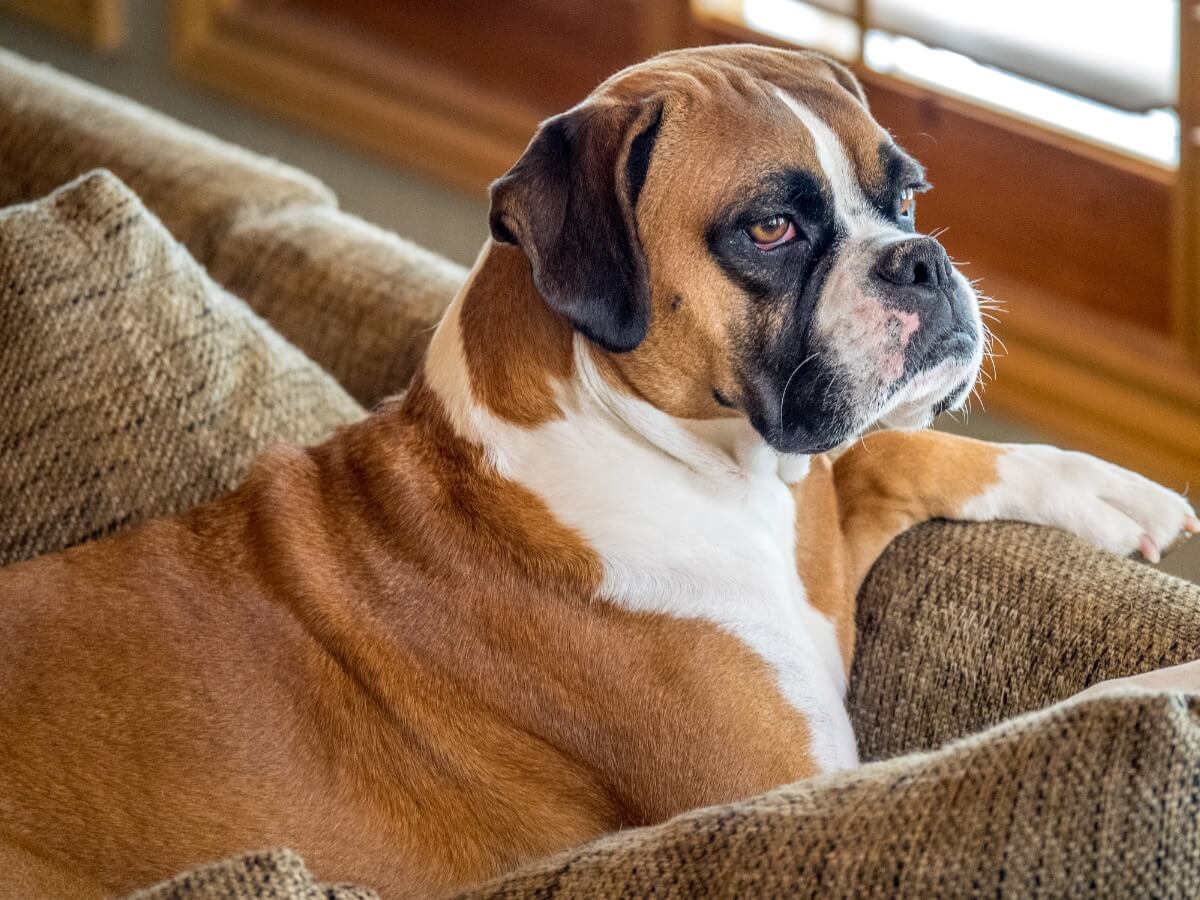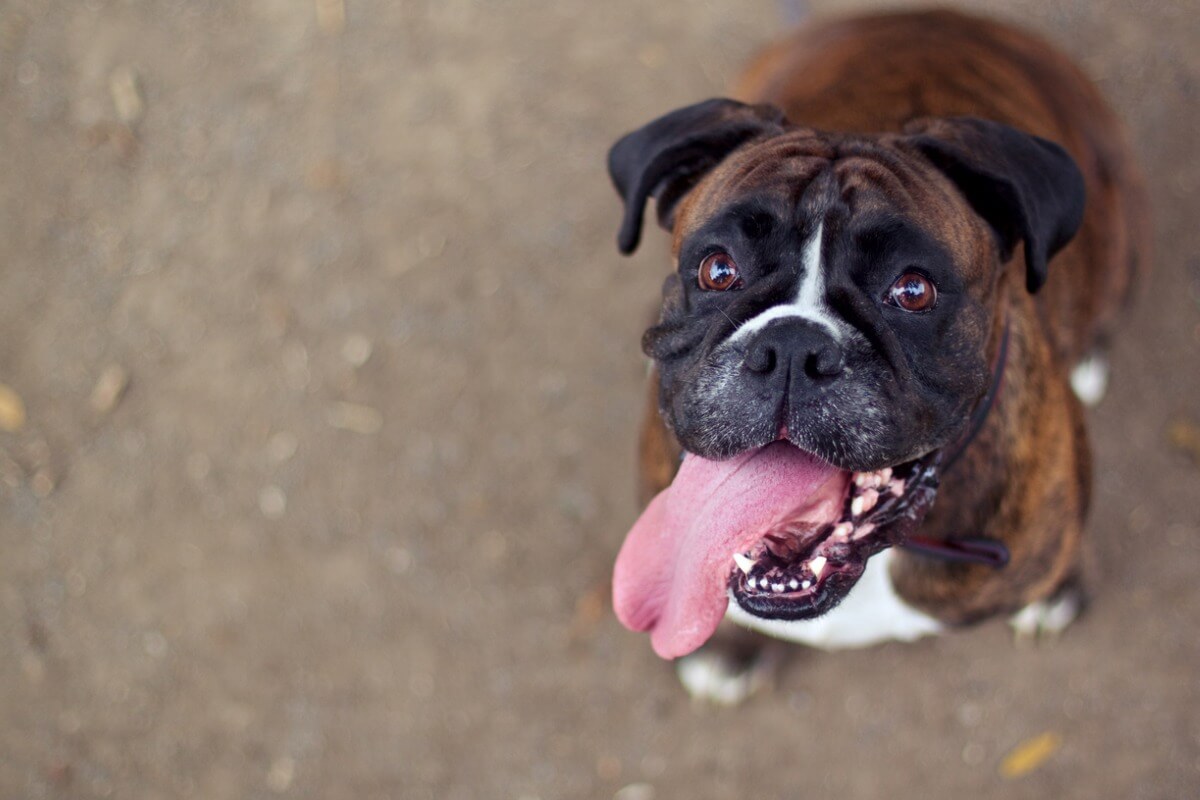Looking After Your Boxer


Reviewed and approved by the biologist Samuel Sanchez
When you decide to get a dog as a pet, we advise you to find out about how to care for that specific breed. Not all dogs require the same care. Therefore, inquiring about the care that each specific breed needs is essential. In today’s article, we’re going to look at how to look after your boxer.
Regarding this breed, we can highlight that it’s medium-size, with a lot of strength and boundless energy. It’s very playful and active, which requires good training from young, among other care aspects. If you’d like to learn more, keep reading.
Boxer features
Originating in Germany during the 19th century, this breed was developed as a result of a cross between the bulldog and the German Bullenbeisser. It gained great international fame during the First World War, as they were used as guard dogs and as messengers. To this day, they’re considered excellent pets.
They can weigh between 27 and 31 kilos (60 to 68 pounds), and have square heads and wide black truffle muzzles. Although they seem imposing with their muscular and compact physique, they’re really very affectionate animals, which give off joy and vitality, even though they can be a bit mischievous.
In fact, it’s often said of them that they’re “eternal puppies” because the character that all young dogs usually have lasts much longer in the Boxer. This is positive and negative in equal measure.
Another notable feature of their physique is their hair color, which is usually tawny or brindle. They can have white spots, but, according to the standard, these shouldn’t cover more than 30% of their body. As for their eyes, they’re usually almond-shaped and dark brown in color.

Caring for a boxer puppy
When incorporating a Boxer puppy into the family, it must be borne in mind that it isn’t appropriate to do so before it’s 8 weeks old. This is because the dog will be going through the beginning of its socialization stage with its mother and other pups (if any).
Socialization is a period in which the puppy begins to relate to its entire environment. This includes interacting with other dogs, animals, people, places, objects, etc. If not socialized properly, the dog is likely to show behavioral problems in the future.
Before its arrival, the basic elements for the pet must be ready: a bed, a feeder, a drinking bowl, a toy and its food. The playful and affectionate character of this dog will make his inclusion in the home very easy, although these captivating aspects shouldn’t make its owner forget how important it is to start obedience training as soon as possible.
What should a boxer puppy learn?
It’s important to train the Boxer well from when it’s a puppy. Before it turns one, the animal must have learned certain behavior and have lived out some experiences that will influence its good behavior as an adult. One of those experiences is the continuous socialization with people, animals, and elements of the environment, in order to avoid inappropriate reactions to them in the future.
Among the most important teaching involved in the care of the Boxer puppy are controlling its bite, training it to urinate on a newspaper until it can be taken out into the street. Basic obedience commands, such as approaching, staying still, letting go of something or sitting down are also important. If you’re not able to do the training of your Boxer puppy, then the ideal thing is to go to a professional in canine ethology.
When the puppy receives its first vaccinations, it will be able to go outside, but first it’s advisable to accustom it to the use of the collar and the leash at home. In addition, it’s also appropriate to familiarize them with car trips as soon as possible.
As a last point about the specific care of the Boxer puppy, it’s good to remember that during this stage you should avoid facing situations that cause stress or anxiety. In this way, you’ll avoid future traumas and fears.
Boxer feeding
Another fundamental aspect to watch out for when it comes to boxer care is their diet. Being a high-energy breed, it’ll need a caloric intake that’s consistent with its daily physical activity. In addition to this, this food will have to coincide with the other needs of each stage of its life.
A large dog can require more than 2,000 kilocalories per day.
Puppy stage
The puppy stage of a dog is crucial. Any failure related to its care during this period can affect its adult life. Therefore, when it comes to food, it’s essential that you opt for high-quality food that can provide it with all the nutrients it requires.
If you don’t buy feed formulated specifically for the breed, it’s advisable to choose one for medium-sized breeds. Of course, specifically for puppies.
Adult stage
When the dog becomes an adult, different foods can be offered to give it a taste of different flavors and to see which one it likes best. What should always be borne in mind are some basic characteristics, such as food that facilitates digestion.
Senior stage
When the dog reaches its senior stage —that is, from 7 years onwards— its diet is usually modified again to another type of feed appropriate for its age. These usually balance all its components to a stage in which the animal is no longer as active as when it was young.
It’s appropriate for the veterinary professional to make the recommendations, because if the boxer has developed a health problem to do with its age, their food provided should be altered according to this.
In any of the three stages mentioned, it’s important to adjust the amounts to the recommendations of the food manufacturer or those of the trusted veterinarian. In this way, problems such as being overweight will be avoided. Of course, if you opt for homemade diets, it should also be done under professional recommendation.
Boxer care
In addition to food, there are many other boxer care aspects that must be taken into account. For example, these dogs are very active and therefore need a good dose of daily exercise. Going for a walk with him about 3 times a day, allowing it to run in wide spaces, as well as playing and interacting with other dogs is important for its physical and mental health.
Boxer health problems
Like many other breeds, the Boxer can suffer from some inherited diseases and others that are the result of circumstances. These include stomach torsion, allergies, dermatitis, heart problems, hip dysplasia, and cancer. However, it should be remembered that regular visits to the vet will be able to detect any problem and solve it in time.
As the experts of the American Kennel Club indicate, it’s important to adhere to the animal’s complete vaccination schedule. This usually begins after 6-8 weeks, but varies according to some conditions.
For this reason, in addition to the early detection of diseases, the veterinarian will be able to administer all the required vaccines to the dog and keep them up to date, as well as making other types of recommendations according to the needs of the animal. This includes food, hygiene, and other things.
On the other hand, this breed can be prone to heatstroke when temperatures are very high. For this reason, it’s necessary to avoid exposing the dog to the sun excessively in the summer times. In addition to this, having a very short coat of hair, it doesn’t tolerate excessive cold either. For this breed, it’s important to live in a temperate environment.
Boxer hair care
Among the care aspects regarding your boxer, you mustn’t forget about the maintenance of its coat. This canid has short, straight hair, so care will be basic, but necessary. Brushing your boxer about twice a week will help keep them clean without frequent bathing, as well as removing all dead hair.
The baths will be given every 6-8 weeks with warm water and a shampoo for short-haired dogs, unless the animal has skin problems. If this is the case, it’s advisable to purchase a specific shampoo for that type of need. Other care related to its hygiene are:
- Nail revision and cutting
- Cleaning of eyes and ears
- Tooth brushing
- Cleaning around the muzzle, since it’s a dog that tends to drool a lot

Looking after a Boxer is similar to the care aspects involved in any other large dog, but this breed has certain special characteristics. In the event of any mishap regarding the training and health of this breed, don’t hesitate to go and see a professional.
All cited sources were thoroughly reviewed by our team to ensure their quality, reliability, currency, and validity. The bibliography of this article was considered reliable and of academic or scientific accuracy.
- Rossi, V. (2018). El Boxer. Parkstone International.
- Tocagni, H. (1969). El perro boxer. Editorial Albatross.
- Rutledge, P. (1999). Manual práctico del boxer: orígenes, estándar, cuidados, alimentación, aseo, salud, adiestramiento, concursos (No. Sirsi) i9788425511424).
- Boxer (dog). Recogido el 6 de julio en https://en.wikipedia.org/wiki/Boxer_(dog)
- Boxer. Recogido el 6 de julio en https://www.akc.org/dog-breeds/boxer/
This text is provided for informational purposes only and does not replace consultation with a professional. If in doubt, consult your specialist.